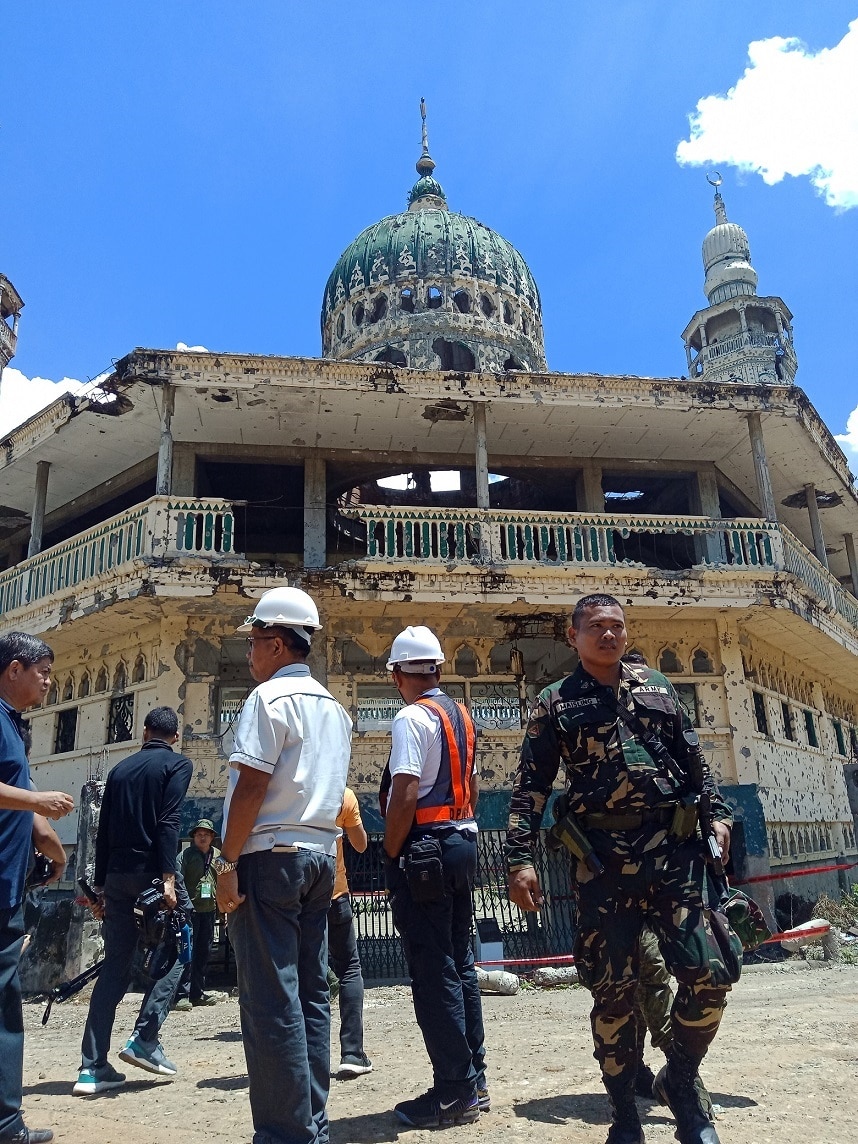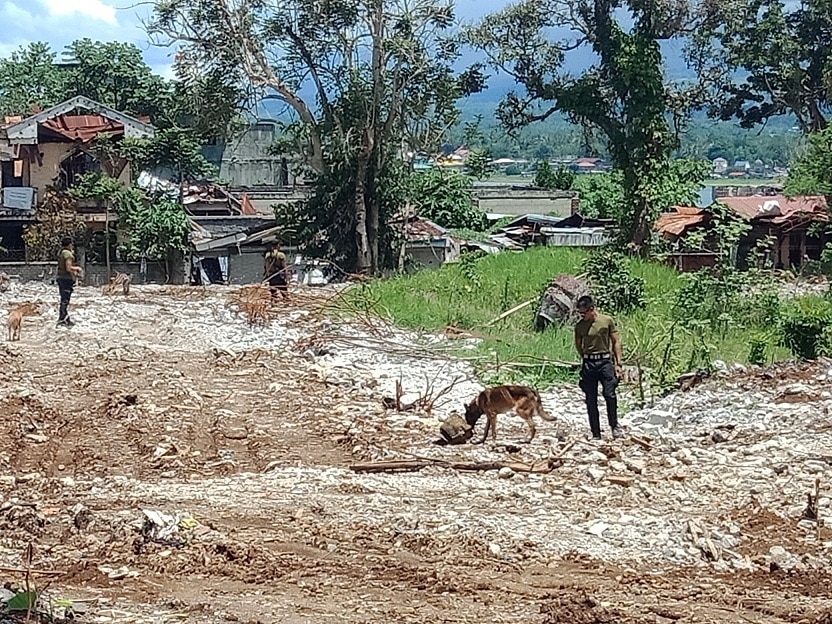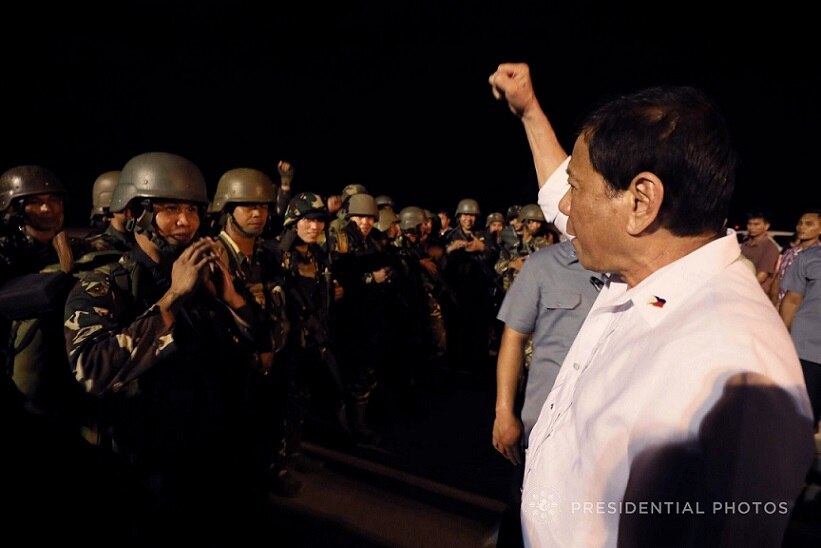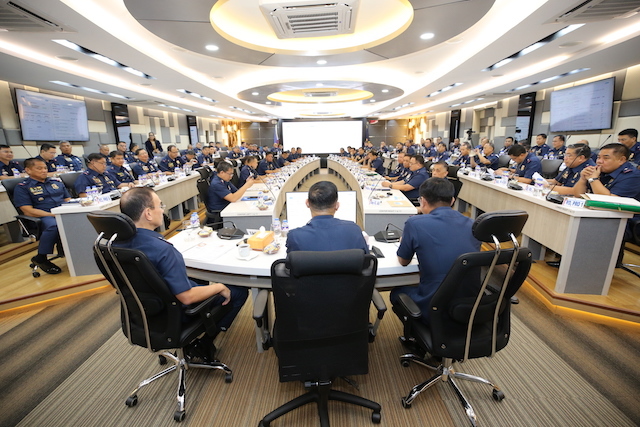Posted to ABS-CBN (Oct 20, 2019):
Factors and forces that led to the Marawi debacle (By Criselda Yabes, VERA Files)
(The following article is an excerpt from a case study written by the author for the project, “Violence, Human Rights, and Democracy in the Philippines.” The project is a joint undertaking by the Third World Studies Center, College of Social Sciences and Philosophy, University of the Philippines Diliman and the Conflict Research Group, Department of Conflict and Development Studies, Ghent University).

The grand mosque in Marawi. VERA Files photo by Johnna Villaviray-Giolagon
The battle of Marawi in 2017, in the heart of the Islamic city in Lanao del Sur province, deviated into violent extremism that opened more fears for the future in what was an undertaking by mostly a generation of millennial fighters.
The siege that lasted five months, from May to October, was unprecedented in magnitude, challenging the military in doctrine and tactics, and prompting daily sorties of air strikes that reduced Marawi to a state of destruction.
It was unbelievable that two principal brothers of a family attached to the political and business elite of the Maranaos – the Muslim ethnic tribe of Lanao del Sur – had raised the stakes of Islamism beyond the call for autonomy in a fractured land.
Butig - the seedbed
It was in the town of Butig, where events leading up to the battle in Marawi, inspired a vision of creating an Islamic state. The sight of poverty recedes out to the meadow in the wide green space, turning into forest trails that lead to a well-hidden encampment – an ideal spot to hide and train a rebel army. It was there where smaller camps around the border and into the neighboring Maguindanao province that the Jemaah Islamiyah trained in their cadetship of a clandestine military school.
It was in Butig where they trained with neophyte fighters from Indonesia and Malaysia whose ties with Filipino rebels formed – over a period of time in scattered shifts of their ideologies – a certain kinship. They developed smaller secret cells for trainings that broke up after the military campaign in 2000. Those who stayed in Butig came into contact, eventually, with the Maute brothers whose family was a mainstay in the town politics and linked to the Moro Islamic Liberation Front (MILF) as well.
When the MILF abandoned Camp Darul Iman in Butig after successive military air strikes in 2016, the brothers took over what was left of it and held their trainings there. The army would attack the camp during what it called its Haribon campaign, named after the brigade unit based in Marawi. This campaign was alternately called the Butig campaign, referring to its location.
The Mautes and Abu Dar
Omarkhayam and Abdullah belonged a family that became known popularly as the Maute Group. The Maute brothers began their jihad in early 2014. The brothers’ graduate degrees from abroad were the shining scepter of their authority.
There was a third man in this partnership, an unknown rebel who goes by the alias Abu Dar, the head of the local Khalifa Islamiya Movement. Abu Dar was involved in bombings in the neighboring Christian cities of Iligan and Cagayan de Oro. He joined the brothers to bring their forces together and this was how the so-called Maute Group was formed.
In Butig, the supposed center of the soon-to-evolve ISIS community, the Maute brothers and Abu Dar conducted a “seminar” in October 2014, where about 40 participants went through some heavy soul-searching, complete with full confessions and weeping. They were supposedly to purify themselves of their sins and vices like smoking, drinking, and fornication. They were told that this was the way to repent. They could atone for their sins as well as intercede in behalf of 70 family members in their lineage.
Was this the beginning of radicalization? Was this going to be a one-way ticket to heaven? Could they erase their sins in the name of jihad, which was going to be the “roof to protect the community”?
Sharia law was rarely practiced by Filipino Muslims. It was only in ISIS and in Pakistan, Brunei, and Saudi Arabia that punishment of stoning for certain instances of fornication was done. By introducing this to a future of the Islamic State, the Maute leaders hoped to turn the world of Filipino Muslims – one that was generally moderate, secular, and still adhering to folk mysticism – upside down.
If the recruits felt they knew very little of what true Islam was, in this “seminar” they finally found their true education. The seminar was a hard blow to their conscience and there was no letup in changing minds and hearts until their leaders were convinced of a full conversion.
In the last phase of the seminar, the recruits were ordered to familiarize themselves with weapons. They were shown a Rocket Propelled Grenade, or an R.P.G. – the kind of weapon that paralyzed military armors in the first days of the Marawi siege. They were told that, by way of hadith, even just carrying a weapon was going to make them blessed, which would come with heavenly rewards.
They were then made to walk for an hour from their bare lodging to an open field that was to be their training ground. They went through a ring of fire, they crawled in and out of tunnels, their adrenalin fueled when live bullets rained on them. The training was supposed to give them a sense of how it was to be in a real firefight.
At the end of the training, they marched in a parade like an army that was born. Abdullah led them, riding on a horse and waving a black banner with an Arabic emblem that said “There is no god but Allah. Mohammad is the messenger of Allah.”
By the time they returned to Camp Darul Iman in Butig later that year (in December 2014), they had completed their all-around training. It was time to fight, to become martyrs and absolve themselves and their families of their sins.
In that meeting, Abdullah did most of the talking, while Abu Dar quietly stood at the back. Omarkhayam was the brother, eager for the trigger, who would draw first blood.
In February 2016, in an operation called Butig 1, he led an attack against an army detachment in Butig’s town hall. Abdullah apparently did not know about his brother’s plan to give the young recruits their baptism of fire. When the army fought back, Abdullah was forced to bring in reinforcement of about 50 men and the firefight lasted for days, this time with bombs and artillery.
Abdullah was upset at his brother for having done such a thing. “The enemy is here,” Omarkhayam was quoted as having told his younger brother, “Why do I need to ask permission to launch an attack? The enemy is here, why shouldn’t we fight?”
The military believed it was Abu Dar who reinforced Omarkhayam’s unprovoked attack on the military detachment. Butig 1 yielded political dividends for the Maute Group. A senior-ranking fighter said the group first had a small army of 30 that grew to about 200 forces, and by the time the battle of Marawi started they had about 600 fighting against government forces to gain control of Lanao del Sur’s capital.
A report by Gail Tan Ilagan of the Ateneo de Davao University, “Toward Countering Recruitment to Violent Extremism in Mindanao,” stated that in mainland Mindanao (i.e. Maguindanao, Lanao del Sur provinces), mosques and the madrasa schools, especially funded by money from Saudi Arabia, were reported to be places for potential recruits “identified through their devout worship, their regular participation in Islamic seminars, and the kind of earnest questions they ask during such gatherings.”
While the boarding schools of the toril essentially confine their students and hold them captive to extremist indoctrinations, “there is little indication of the success of mass recruitment if indeed such is being attempted in the first place.”
In Marawi, the torils were known to be the parents’ last resort for delinquent children, but for some who found out that their children were being trained in Butig under harsh conditions and in some extreme cases, were sent to tiny, isolated islands on the lake, they attempted to take them back. The orphans were much an easy prey.

K9 units in Marawi in October 2018. VERA Files photo by Johnna Villaviray Giolagon
Butig 2/Haribon 2 broke out three months after the first one, in May 2016. The military was able to identify four small encampments in the Butig hideout, and began firing artillery in their direction. There were fighters from the Maute group that were training in Piagapo, near west of Marawi. They came to the rescue of the fighters in Butig and they were able to bring the battle back against the military before the start of the Ramadan in June. The fighters were told that striking during the Holy Month would mean having their heavenly rewards multiplied.
But the military bombardment had taken its toll. Many were wounded and escaped to the lake using a banca to seek medical assistance elsewhere. After Butig 2/Haribon 2, the group continued recruiting among close relatives, school children and orphans. Rouge fighters from the MILF and the breakaway Bangsamoro Islamic Freedom Fighters (BIFF) also joined, beefing up a force, not of ragtag, but young solid fighters.
The arrival of Hapilon
By December 2016, there were random air strikes leading up to what would next become Butig 3/Haribon 3. The rebels were caught off guard, retreating to the hinterland border of Maguindanao. There they stayed silent. Some of the fighters had heard that one of the Abu Sayyaf leaders, Isnilon Hapilon, was coming from Basilan island to join them.
The military had information that he landed by boat along the northwestern coast by Illana Bay, along with 50 passengers who supposedly included foreign fighters. This was the basis for the third operation, believing that after such a heavy bombardment Hapilon might have gotten killed or wounded.
By all accounts, this was big news. But Hapilon actually did not arrive in Lanao until the second week of January 2017, according to one of the fighters, when the Maute brothers’ group had already settled back in Butig after the military operation. He had his own team of men, including his son, and was given his own camp where only Abdullah and Omarkhayam could see him.
The young fighters in Butig were in awe of Hapilon, coming face-to-face with the warrior who had been around since the inception of the Abu Sayyaf in Sulu in the late 1990s. Following an inspirational speech by Hapilon during a private and personal meeting, the fighters moved to Piagapo, crossing the Lake Lanao and settling by the site near a tower that was once an American settlement in the colonial days of the early 1900s.
The group stayed there for about a month, during which there was talk of a big Marawi operation, similar to what they had heard when Hapilon came to Butig. The other fighters, about 100 of them, set up camp surreptitiously and separately in the barangays around Marawi. A big plan was afoot.
Then in April 2017, the army brigade commander in Marawi asked for more troops when reports filtered in that there was going to be another attack. When elite special forces moved into Piagapo, fighting ensued. Piagapo was relatively a progressive town compared to others in Lanao del Sur province, and the local government more or less cooperated with the military in house searches after the Piagapo operation that took over the rebel camp and dismantled their base.
Military mistake
It took Air Force strikes to stop the rebels and they thought that was the end of it, and that it would take time before the rebels could regroup and strike somewhere else. As it turned out, the military was very wrong.
Soon after conducting the Piagapo operations, their attention was suddenly diverted towards going after communist rebels operating at the border into Bukidnon on the eastern flank of Lanao del Sur. The army camp in Marawi was left vulnerable with only about a company on guard. This explains why, despite receiving naval intelligence reports all the way from the Western Command in Zamboanga, warning of an impending threat by Hapilon and his comrades, the local command was in no position to prevent the rebels’ siege of Marawi on May 23.
The battle of Marawi was officially declared over after the military killed Isnilon Hapilon and Omarkhayam Maute in mid-October 2017. Abdullah Maute, too, was believed killed earlier in the siege but there have been no reports of his body being retrieved.
Abu Dar escaped and tried to put a new army together. His plan was short-lived; he was killed in a firefight with an army platoon in mid-March 2019, in an area a mere 30 kilometers from Butig.

President Rodrigo Duterte pays tribute to soldiers who fought in Marawi at a ceremony at Laguindingan Airport in Cagayan de Oro City on October 20, 2017. Malacañang photo by Ace MorandanteMarawi, however, has never recovered from the battle. It remains a devastated area and its residents still to receive the government aid promised by President Rodrigo Duterte who, later in his speeches, relinquished those promises to rebuild Marawi, saying there were enough wealthy Maranao families who could provide the needed help. He also blamed the illegal drug trade and corruption money as impetus for the violence.
By reducing the causes and aftermath of the Marawi siege to a black-and-white issue, the government would likely fail to address the Muslims’ future in nation building, as previous administrations lacked foresight and cutting-edge policies.
Marawi story still unfoldingThe narrative of how the Marawi conflict came into fruition remains as incomplete as are the many unanswered questions. For example, how does one draw links and connect dots from place to place (rebel strongholds) and people to people (rebel leaders) before the plot to take over Marawi was hatched? Is it the clandestine movement of foreign terrorists vis-à-vis the local rebel movement that spelled a change in the trajectory of the Muslim insurgency?
Mapping out the links and alliances would be as tough and arduous as unspooling the threads binding the clans and family loyalties, not to mention their place as dynastic families in the sphere of local governance. But it was certainly the call to violence over the years, the inability to stop it at all cost, that made the southern enclaves of the Muslim Mindanao an open field.
In early 2019, roughly two years after the Marawi siege began, a new Bangsamoro authority was put in place for a regional election in the near future for a new autonomous government. It is imperative that it forges ahead in its map to define a resurgence of Muslim pride and demand equality among Filipinos; to reel back would no doubt bring Mindanao into a spiral deeper in violence, serving yet again the ingredients for another Marawi crisis in the making.
(VERA Files is put out by veteran journalists taking a deeper look at current issues. Vera is Latin for “true.”)
https://news.abs-cbn.com/spotlight/10/20/19/factors-and-forces-that-led-to-the-marawi-debacle














